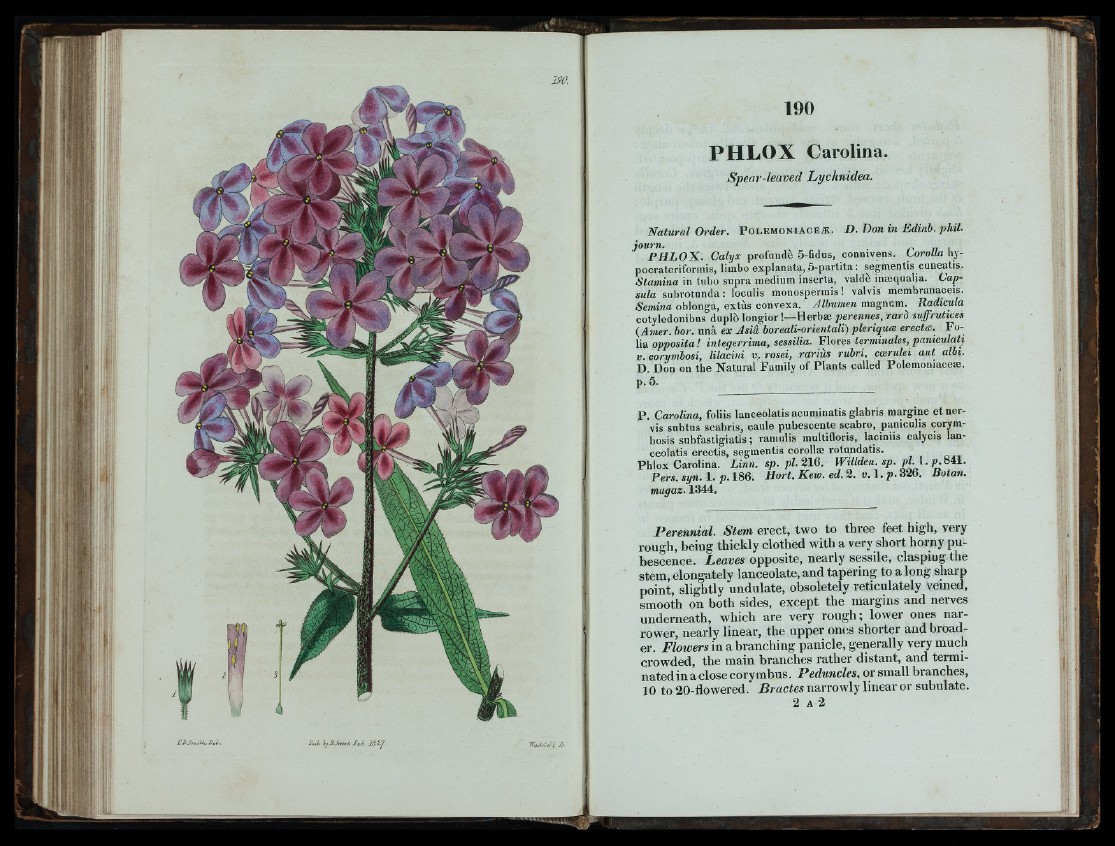
i , f t e
■ i; . t e
J EJiJncULDd. A í¿ ly J iJ w te t .
PHLOX Carolina.
Spear-leaved Lychnidea.
Natural Order. P o l e m o n i a c e æ . D . Don in Edinb. phil.
journ.
P H L O X . Calyx profundè 5-fidns, connivens. Lorolla hypocrateriformis,
limbo explanata, 5-partita: segmentis cuneatis.
Stamina in tubo supra medium inserta, valdè inæqualia. Capsula
subrotunda: loculis monospermis! valvis membranaceis.
Semina oblonga, extùs convexa. Albumen magnum^ Radícula
cotyledonibus duplò longior !—Herbæ perennes, rarò suffrutices
{Amer. bor. unâ ex Asia boreali-orientali) pleriquoe erecta. Fo-
lia opposita! integerrima, sessilia. Flores terminaleSj paniculaii
V» corymbosi, lilacini v, rosei, rariùs rubri, coerulei aut albi.
D. Don on the Natural Family of Plants called Polemoniaceæ.
P-5- ______
P . Carolina, foliis lanceolatis acuminatis glabris margine et nervis
subtus scabris, caule pubescente scabro, paniculis corym-
bosis subfastigiatis ; raniulis multifloris, laciniis calycis lanceolatis
erectis, segmentis corollæ rotundatis.
Phlox Carolina. Linn. sp. pl. 216. WiUden. sp. pl. V. p. 841.
Pers. syn. 1. p. 186. Hort. Kew. ed. 2. u. 1. p . 326. Botan.
magaz. 1344.
Perennial. Stem erect, two to three feet high, very
rough, heing thickly clothed with a very short horny pu-
hescence. Leaves opposite, nearly sessile, clasping the
stem, elongately lanceolate, and tapering to a long sharp
point, slightly undulate, obsoletely reticulately veined,
smooth on both sides, except the margins and nerves
underneath, which are very rough; lower ones narrower,
nearly linear, the upper ones shorter and broader.
Flowers in a branching panicle, generally very much
crowded, the main branches rather distant, and terminated
in a close corymbus. Peduncles, or small branches,
10 to 20-tlowered. Bractes narrowly linear or subulate.
2 A 2
HaAiifJi fc
HI